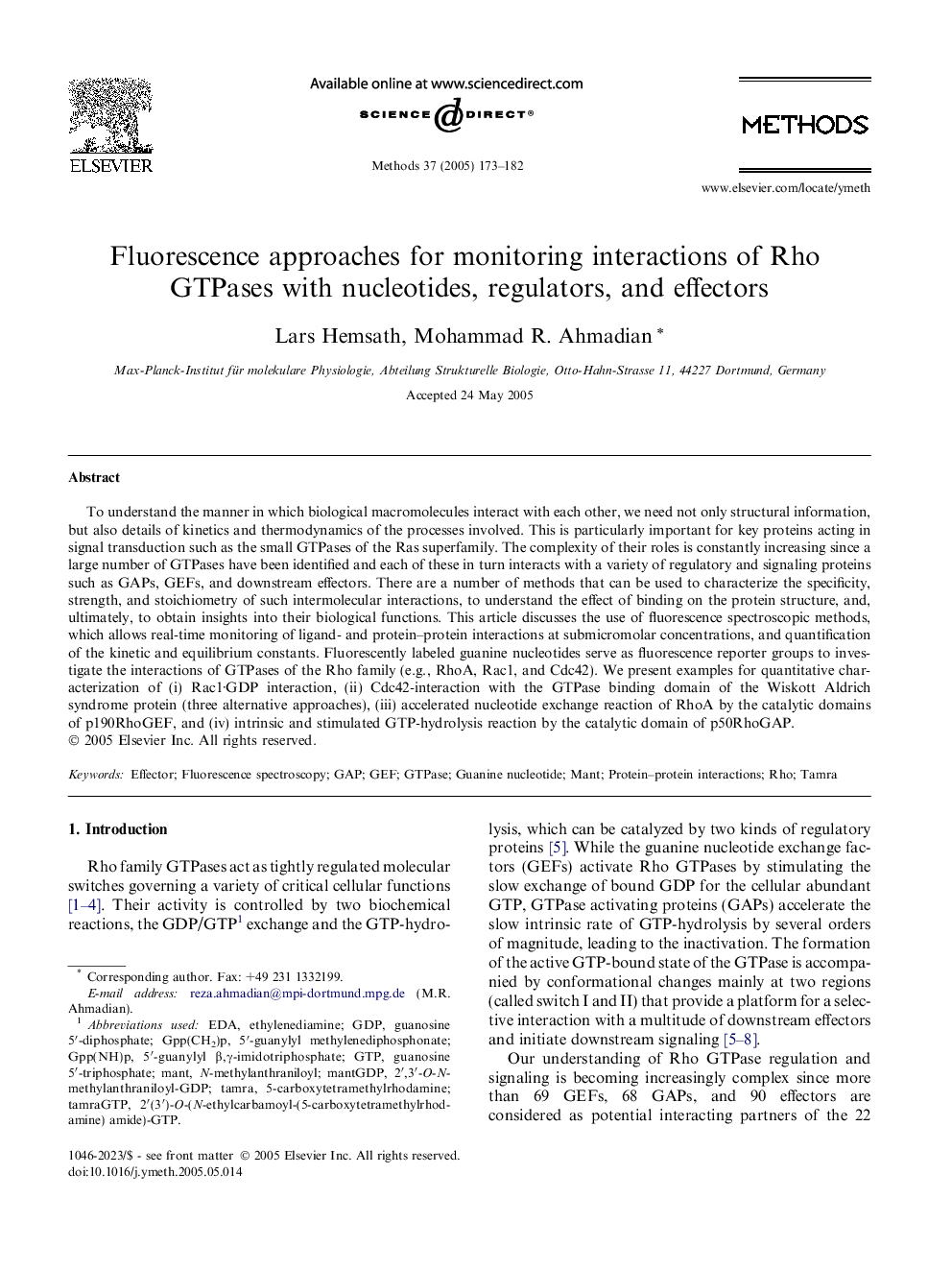| Article ID | Journal | Published Year | Pages | File Type |
|---|---|---|---|---|
| 10826563 | Methods | 2005 | 10 Pages |
Abstract
To understand the manner in which biological macromolecules interact with each other, we need not only structural information, but also details of kinetics and thermodynamics of the processes involved. This is particularly important for key proteins acting in signal transduction such as the small GTPases of the Ras superfamily. The complexity of their roles is constantly increasing since a large number of GTPases have been identified and each of these in turn interacts with a variety of regulatory and signaling proteins such as GAPs, GEFs, and downstream effectors. There are a number of methods that can be used to characterize the specificity, strength, and stoichiometry of such intermolecular interactions, to understand the effect of binding on the protein structure, and, ultimately, to obtain insights into their biological functions. This article discusses the use of fluorescence spectroscopic methods, which allows real-time monitoring of ligand- and protein-protein interactions at submicromolar concentrations, and quantification of the kinetic and equilibrium constants. Fluorescently labeled guanine nucleotides serve as fluorescence reporter groups to investigate the interactions of GTPases of the Rho family (e.g., RhoA, Rac1, and Cdc42). We present examples for quantitative characterization of (i) Rac1·GDP interaction, (ii) Cdc42-interaction with the GTPase binding domain of the Wiskott Aldrich syndrome protein (three alternative approaches), (iii) accelerated nucleotide exchange reaction of RhoA by the catalytic domains of p190RhoGEF, and (iv) intrinsic and stimulated GTP-hydrolysis reaction by the catalytic domain of p50RhoGAP.
Keywords
Related Topics
Life Sciences
Biochemistry, Genetics and Molecular Biology
Biochemistry
Authors
Lars Hemsath, Mohammad R. Ahmadian,
